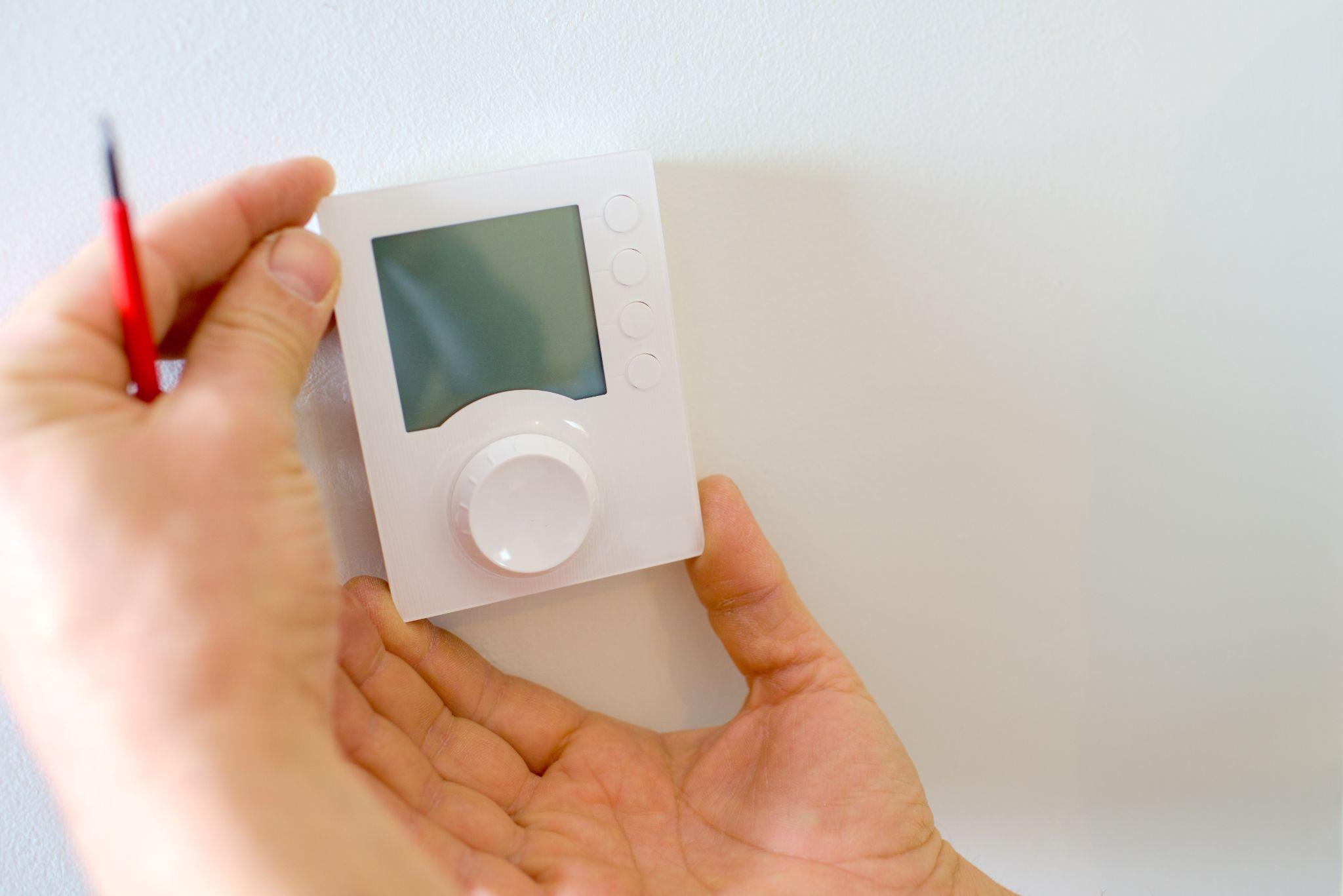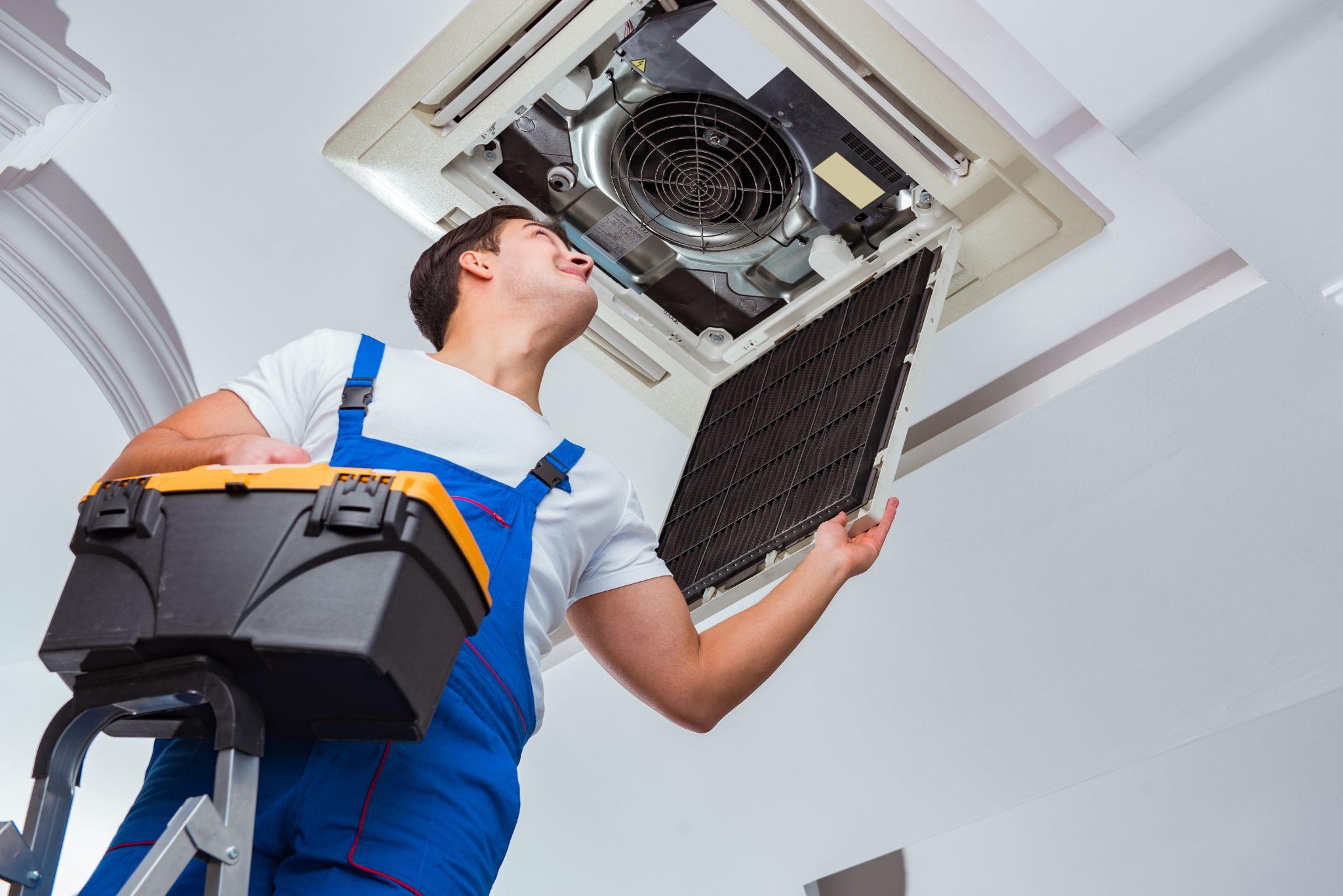AIR CONDITIONING MAINTENANCE TIPS TO HELP KEEP YOUR AC SYSTEM RUNNING EFFICIENTLY

On average in central Texas, an air conditioning system will last from 10 to 12 years. The service life can be shortened or extended, depending on how regularly preventive maintenance is performed. Maintenance will also help the system run more efficiently so that your home or office stays more comfortable and it costs you less money.
Regular maintenance ensures your system is more energy-efficient and requires fewer repairs, both of which save you money.
There is some maintenance you can do yourself, while other maintenance requires the service of an HVAC system expert. Professional maintenance should be performed on an HVAC system twice a year, once in the spring and once in the fall.
The following is a list of the tune-up, inspection, and services offered at Christianson Air Conditioning & Plumbing:
- Thermostat calibration & setting – Ensure comfort when at home and save energy when you’re away.
- Check & tighten all electrical connections – System will operate more safely and it will increase the life of components.
- Lubricate all moving parts – Reduce energy by minimizing friction and overheating.
- Check & inspect condensate drain – Plugged drains can affect indoor humidity levels and, more seriously, cause water damage.
- Check all system controls – Ensure the system starts, operates, and shuts off properly.
- Clean condenser coils – Dirty coils increase energy costs and reduce the life of equipment.
- Check refrigerant levels & adjust if necessary – Too much or too little refrigerant increases energy costs.
- Clean & adjust blower components – Airflow problems can reduce efficiency up to 15%.
- (If applicable) Check all gas connections, gas pressure, burner combustion, and heat exchanger – Improperly sealed gas connections are a fire hazard. Dirty burners or failed heat exchangers can allow carbon monoxide to escape, which can be extremely unsafe or possibly fatal.
Do-It-Yourself Air Conditioning Maintenance
Changing air conditioning air filters is probably the part of air conditioning maintenance that most people are most familiar with. Still, many fail to keep records or follow up with routine filter changes. Not only is this one of the most important parts of do-it-yourself air conditioning maintenance, but it is also one of the simplest.
When dirt builds up on air filters, air flow is obstructed, preventing the system from working efficiently. Additionally, it lowers indoor air quality. So, if you have allergies or asthma, you can notice an increase in respiratory problems when you have a dirty air filter.
Either cleaning a reusable filter or replacing it with a new one can improve energy efficiency by as much as 15%. To aid in system efficiency and help extend the life of your system, Christianson recommends cleaning or replacing filters once a month.
The air conditioner coils absorb heat, making them an important part of the cooling system. They are also prone to collecting dirt, even when the filter is kept clean. When dirt covers the coils, they are unable to absorb heat efficiently. Indoor units should be examined visually each year, prior to air conditioning cooling season, and cleaned if necessary.
On the outdoor condensing units, the coils are even more vulnerable due to exposure to foliage, dust, and grass clippings. It is important to keep grass, weeds, bushes, and plants cleared and trimmed away from the condensing unit. It is also a good idea to treat around the unit’s concrete slab with pesticide to prevent ants and spiders.
You may recognize the area on the evaporator and condenser coils known as “coil fins” by sight more than by their name. These flat metal pieces are extremely fragile and easy to bend. Be very careful when mowing or trimming to not damage the coils. Bent coils reduce airflow dramatically and impact the efficiency and life of your system. If the fins become badly bent or damaged, contact a service provider or a Christianson expert to restore them to good operating condition.
Other DIY Air Conditioning Maintenance Tips

There are several other DIY AC unit maintenance you can do before scheduling HVAC maintenance, including:
#1: Upgrade Your Thermostat
Older thermostats are not as energy-efficient as programmable thermostats and smart thermostats. Smart thermostats are superior because they learn your routines and will automatically adjust temperatures based on those routines.
Additionally, you can access your thermostat from just about anywhere using an app on your smartphone. You can make changes to your settings, such as turning down the AC a few degrees when you leave work so your home is cooled to your desired temperature when you arrive.
#2: Clean the Drain Pan
Some air conditioning units have a drain pan that helps drain away water when the unit runs. Dirt, dust, and other debris can get into the bottom of the pan. Over time, as the water mixes with dirt and dust, it can create clogs in the drain line.
About once a month, check the drain pan to make sure it is clean. If it is dirty, wash it with a mild dish soap, rinse it, dry it, and put it back into the unit. Your AC technician can show you where the drain pan is the next time they perform AC maintenance.
#3: Verify the Outdoor Unit Is Level
The outdoor unit must be level in order for it to function correctly. If it is not level, the unit will still run but can lead to problems with condensation getting under the evaporator and making the insulation wet. Should this occur, then all the insulation has to be replaced since wet insulation no longer provides any resistance.
Not to mention, the wet insulation becomes a breeding ground for mold and mildew. When the AC runs, it will not only increase the humidity inside the house but also make it smell.
#4: Check the Drain Pipe on the Outdoor AC Unit
When the air conditioner runs, it will produce water as it cools hot air. The water should drain out a drain pipe on the side of the unit. If you notice the water is not draining properly, carefully remove the drain pipe and run hot water through it to remove any clogs.
Other DIY Tips to Improve Your Home’s Energy Efficiency
Aside from keeping up with air conditioning maintenance, there are several other things you can do to improve your home’s energy efficiency to keep it cool in summer and warm in winter, as follows:

- Recaulk Around Windows – You should replace the old caulk annually to help prevent air leaks around windows.
- Replace Door Seals – Inspect the door seals around doors and replace anywhere you can see light coming in around the door.
- Block Direct Sunlight – Use thick curtains or thick blinds to block out direct sunlight on sun-facing windows.
- Replace Your Windows – Upgrading to energy-efficient windows does improve the overall energy efficiency of your home.
- Add Attic Insulation – Another easy DIY project is to increase the amount of insulation in your attic.
Leave It to the Pros
Although some minor maintenance can be performed by the homeowner or business owner, a maintenance plan with Christianson Air Conditioning & Plumbing includes all the annual and bi-annual maintenance that will keep your HVAC system running more efficiently. These services include two precision system tune-ups annually: one in the spring and one in the fall.
Your air conditioning is a vital component of your comfort and utility bill. Don’t leave its efficiency to chance. Call Christianson Air Conditioning & Plumbing in Austin at (512) 246-5400 or our San Antonio location at (210) 651-1212 to schedule your maintenance services before hot weather rolls around.



You must be logged in to post a comment.